Tempering and Molding
Why temper chocolate? It is what gives the chocolate bars you eat that finished glossy, shiny appearance and that nice snap when you eat it.
If you don't actively temper your chocolate, you might get lucky or you might not.
Untempered
-Unstable
-Matte
-Melts easily
This is of a piece of chocolate that is not tempered. It has just a matte appearance, is soft and melts readily if you try and pick it up. After a couple of days untempered chocolate tends to "bloom".
Bloomed
-Coarse
-Unstable
This is Bloom. It still tastes fine, but I find the texture of bloomed chocolate a little odd. Kind of coarse.
Tempered
-Stable
-Shine
-Snap
Finally, this is tempered chocolate. It has a nice shine, snaps when you break it, and does not melt as you are trying to pick it up.
Tempering involves bringing your Alchemical chocolate creation to a temperature at which the cocoa butter reaches its most stable form—which conveniently is a form humans like to eat and humans eating our chocolate is why we make it, but also why we learn the dark art of tempering.
Related Reading
In case you ever wondered what is actually happening inside your chocolate during tempering.
A few words about moisture and chocolate
Chocolate will crystallize (incorrectly) if any moisture gets in it. When tempering chocolate, you must keep your chocolate dry at all stages, after all, you just spent days refining it to remove the water.
Just look what a little bit of water can do!!! If you really get into making chocolate, it might be worth it to consider purchasing a chocolate tempering machine although I personally prefer the hands on process. These appliances take much of the guess work out of tempering.
How to Temper Chocolate
There are lots of ways to temper chocolate and they are all over the internet. And the details can vary quite a bit.
Here are a few basics that everyone should know that hopefully lets you relax about some of the details
You can temper over and over. If your chocolate blooms, it is not ruined. Just melt it again and start over.
You may see you need to melt your chocolate anywhere from 100 F to 135 F. Anywhere in there will work.
You will not burn your chocolate even if it gets above 160 F. Many milk chocolates refine that hot. What is important is that you use a double boiler to heat your chocolate. Heating chocolate directly in a pan over heat can indeed burn chocolate because the surface of the pan, even on low, can get above 300 F.
I recommend tempering in bowls. There is nothing special about using a machine, or a marble slab. I find I have more control with bowls and can work without rushing.
An Overview
Melt your chocolate in a double boiler until the chocolate is at least 105 F.
Pour about 2/3 into another bowl. Set the other 1/3 to the side and keep it warm.
Stir the 2/3 portion until it starts to thicken. This happens about 79-81 F. The thickening is a sign you have created seed.
Slowly add parts of the warm chocolate to the cooler, seed chocolate.
Do it little by little until the temperature is 88 F (86 F for milk chocolate).
Pour up into molds and let set up.
Unmold and enjoy
Now the details. Let’s do this.
But First, On Why You need a good thermometer
Why you need a Probe Thermometer
They should read the same temperature.
The first thing is you need a good thermometer. One where you can see 1 F increments. That means no candy thermometers. The just are not accurate enough. Also, you cannot use IR or laser thermometers on the water. You need a probe thermometer for that. The laser needs something to bounce off and water screws it up. Have a look (left picture, note the differences in temperatures).
You can of course use either for chocolate and I personally like a laser thermometer.
Other items you will need:
4 bowls that nest together.
Towels
Spatula
Molds
Double boiler/pan
Tempering Temperature Charts
Fahrenheit
Celcius
* If the Silk is solid and you grate it, 95 F. If you are stirring in softened Silk, you bring it on down to your working temperature
** The cooling point of all chocolates is until it slightly thickens. That is more important than an actual temperature
*** coconut oil inhibits spontaineous tempering and can only be done with Silk.
Tempering Step by Step
Step 1
Melt your chocolate in a double boiler until the chocolate is at least 105 F.
You don’t need an official double boiler here. Just a bowl on top of a pan was warm to simmering water. Again 105-130 F is just fine. The higher you go just means you have to wait longer for it to cool to a reasonable temperature before you can use it.
Key Understanding:
Chocolate or more specifically cocoa butter forms 5 different types of crystals. Our goal in tempering is to make one called Type V. Heating the chocolate above all of the melting points gives you a clean slate to work with.
Step 2
Pour about 2/3 into another bowl. Set the other 1/3 to the side and keep it warm.
I find it very helpful to put my bowl of warm chocolate into a bowl that contains warm water. 90-95 F. Remember, use a probe thermometer, not an IR or laser..
Likewise, put the other chocolate into a water bath that is cool. 60-70 F works well.
Key Understanding:
Water baths help either keep the temperature stable or move the temperature in the direction you need it to go. Make sure the lip of the inner bowl is higher than the outer bowl or water may spill into your chocolate.
Step 3
Stir the 2/3 portion until it starts to thicken.
This happens about 79-81 F. The thickening is a sign you have created seed. You may also hear it referred to as cooling until the chocolate traces.
Note: If you happen to cool your chocolate too much and it gets very thick, nothing is ruined. It is only harder to work with. Just stir in a little of the warm chocolate you have in to make it workable, or change water baths so the thick seed chocolate is in the warm one. Once it is workable, just proceed as normal.
Key Understanding:
At this point you have created Type IV and Type V crystals. When you cool chocolate both naturally form at the same time. The thickening is the sign you have enough Type V to ensure a good temper. The exact temperature does not matter. It is often helpful to still have a thermometer handy to see how close you are getting.
Step 4
Slowly add parts of the warm chocolate to the cooler, seed chocolate.
Your initial goal here is just to raise the temperature a little so the chocolate is easier to work with.
Step 5
Do it little by little until the temperature is 88 F (86 F for milk chocolate).
Key Understanding:
At 88 F only Type V crystals can survive. The Type IV that you created when cooling will melt. Now that there is only Type V present, the chocolate has a scaffolding to build upon and the chocolate will crystalize properly giving you tempered chocolate.
Step 6
Pour up into molds and let set up.
Pointers for Success:
Pour directly from the bowl into your molds.
Make sure you wipe the bottom of bowl so no water drips in.
Use a large ladle. Do your best not to use more than one scoop per cavity.
Multiple fillings of the same cavity can lead to surface bloom
Step 7
Rap the molds on the table to settle the chocolate.
What to do if you over pour?
Don’t scrape the chocolate off at all possible. If you must scrap because you poured too much, do it only one time and then rap the molds again.
Key Understanding:
Crystals are fragile. Scraping and disturbing the chocolate while it is setting up can disrupt the crystals. These disrupted crystals can lead to bloom.
Step 8
Unmold and enjoy.
Wait a few hours for your chocolate to fully cool and temper. Then briskly turn the molds over and you chocolate should pop right out.
I don’t think I need to tell you how to enjoy the chocolate.
Odds & Ends
To refrigerate or not. This is a little of where the art and science comes into play. Some people swear by it, some find it causes issues. Here is what I can tell you.
If you have a lot of Type V crystals and your room is on the cooler side (under 70 F), you probably don’t need to refrigerate at all. The crystals will build upon each other just fine and your chocolate will temper perfectly.
If you are a little low on Type V crystals, or the temperature is a little warm (above 75 F) you probably want to put your chocolate into the refrigerator for 5-10 minutes. But watch out. If they are in too long or it’s too cold you can rush the temper, causing it to be unstable and bloom will be the result after it comes out of the refrigerator.
What to do if your room temperature is 70-75 F? My recommendation is to try and let your bars set up at room temperature. If it works and they temper, you are good to go.
If you find they are a little slow to set up or you have minor bloom issues, let them set at room temperature 4-5 minutes. Then put them into the refrigerator again for about 5 minutes; just enough to kick start the process. Then let them finish setting up at room temperature.
I mentioned before there are lots of ways to temper and way more to tempering.
Check out the links below for more.
One of my favorite ways is using Cocoa butter Silk:
A deep read on the science of tempering:



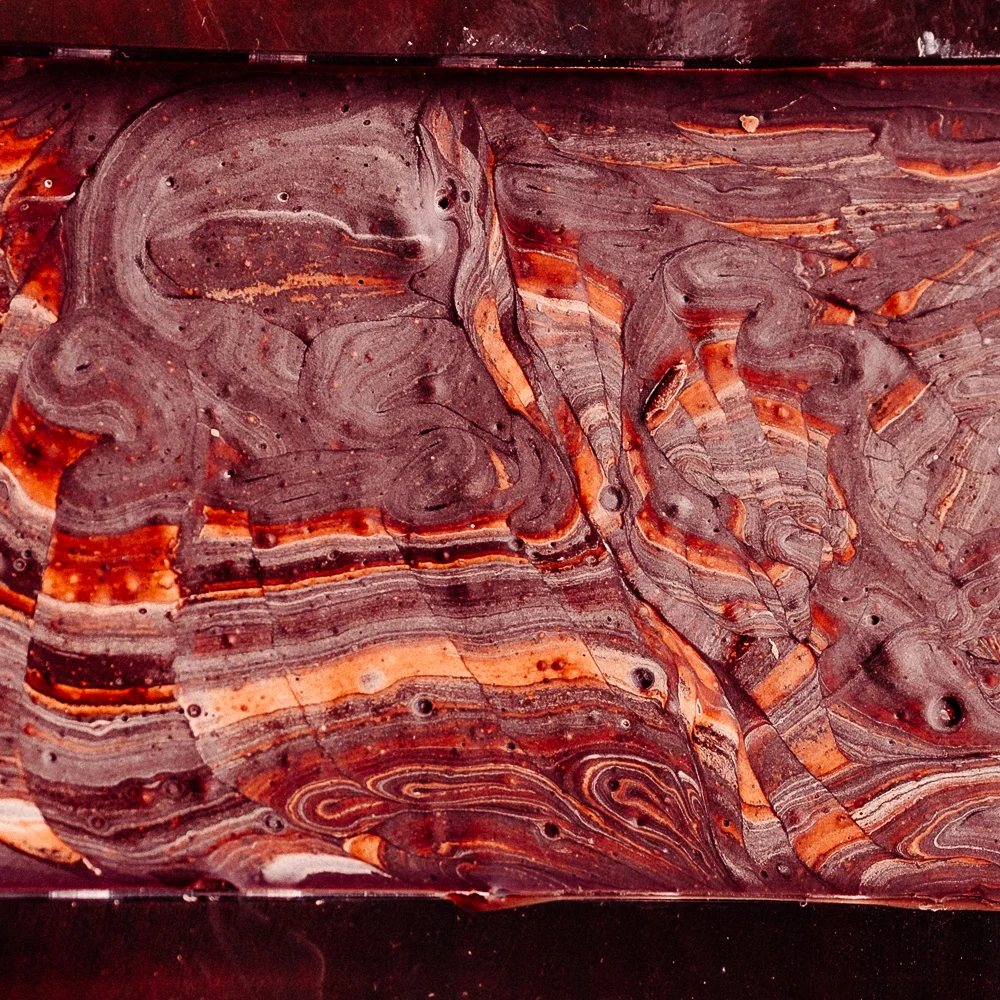
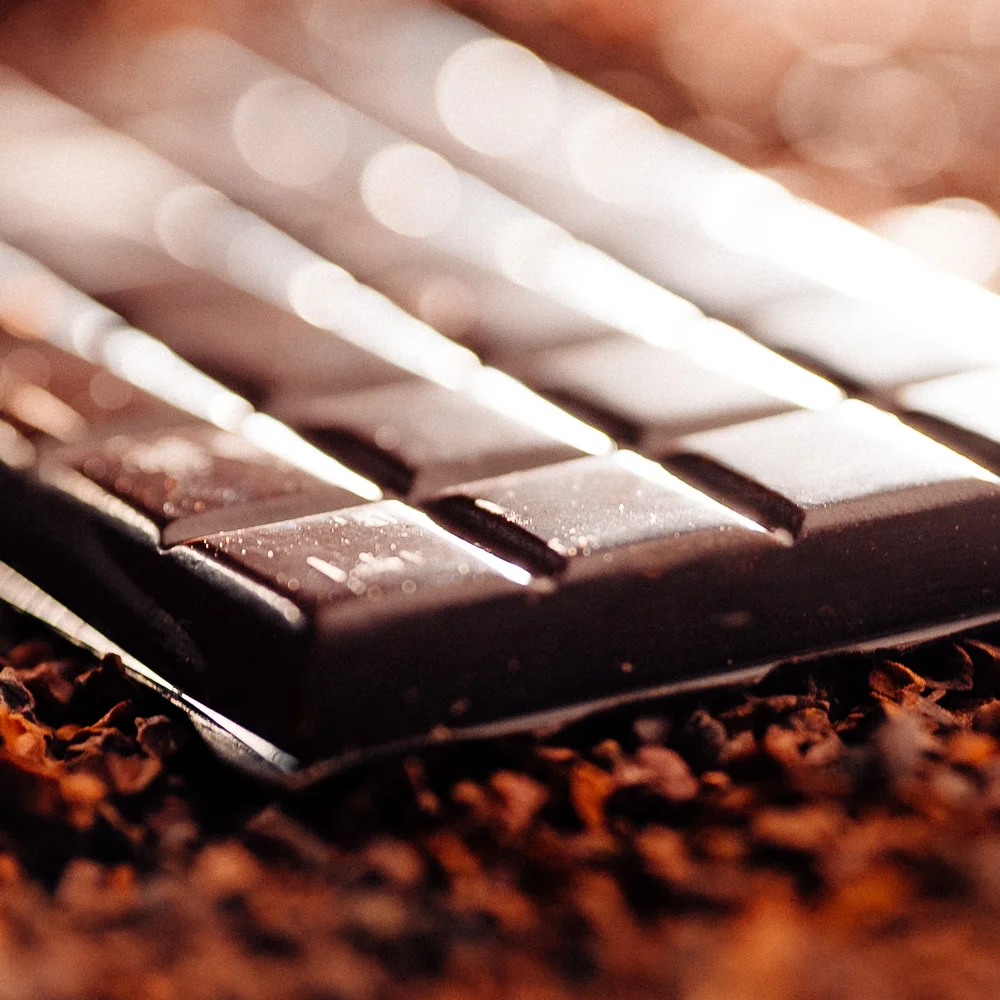




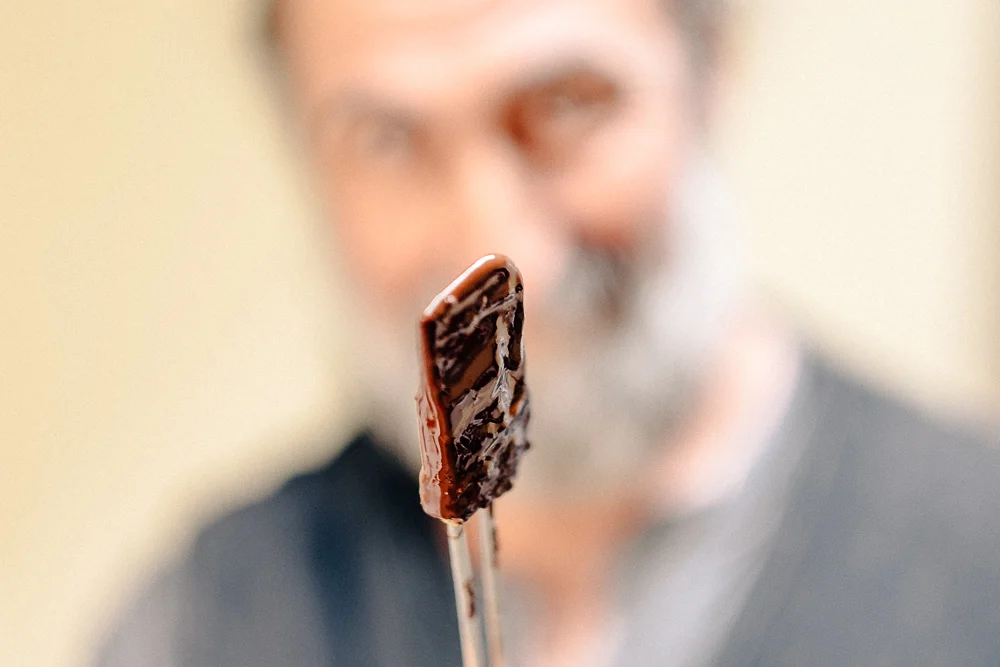




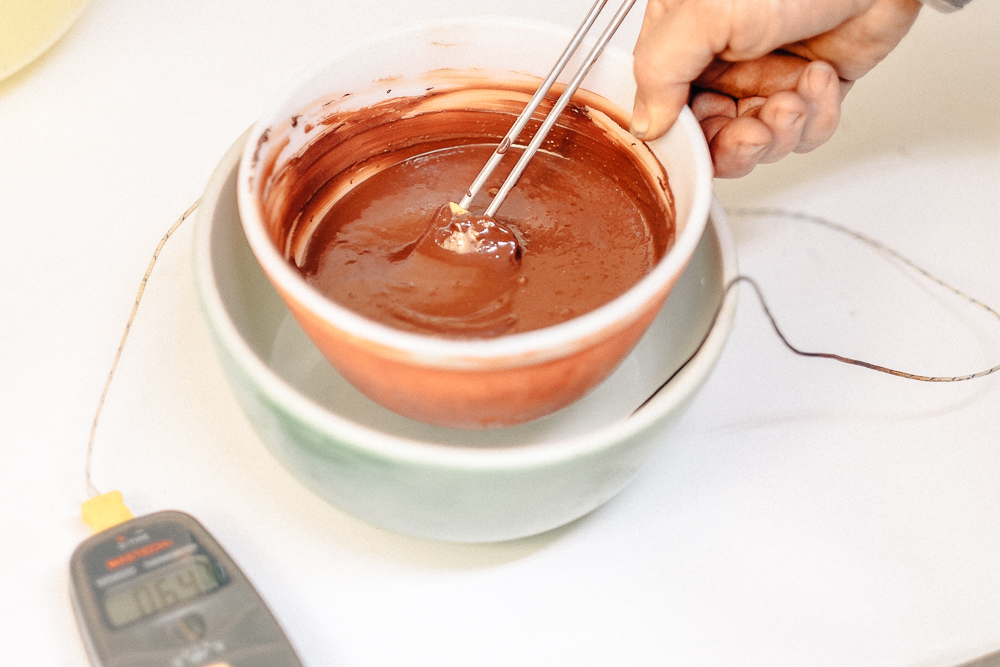


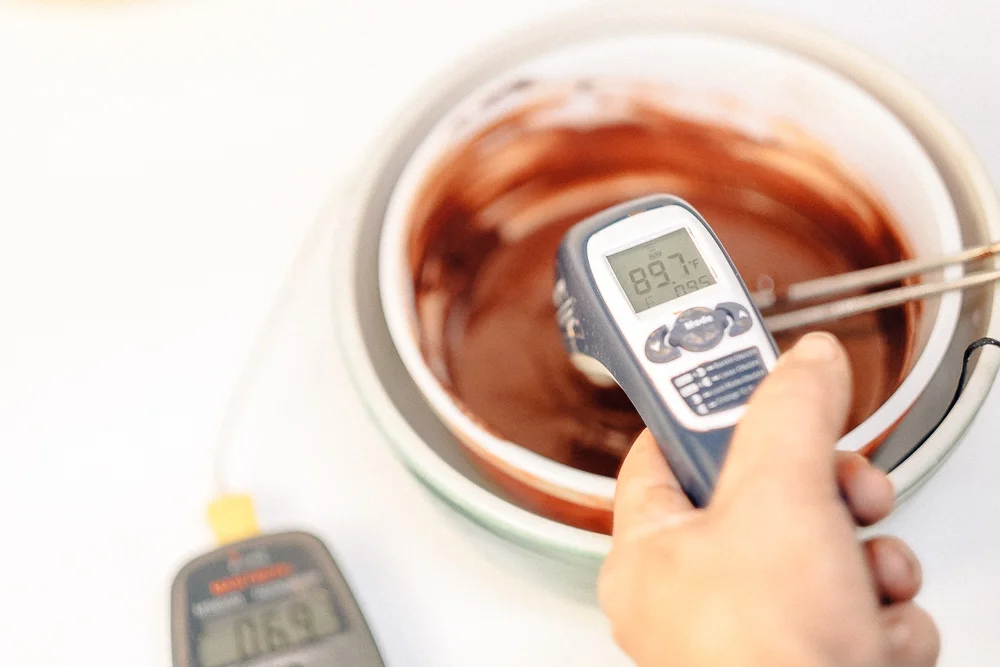

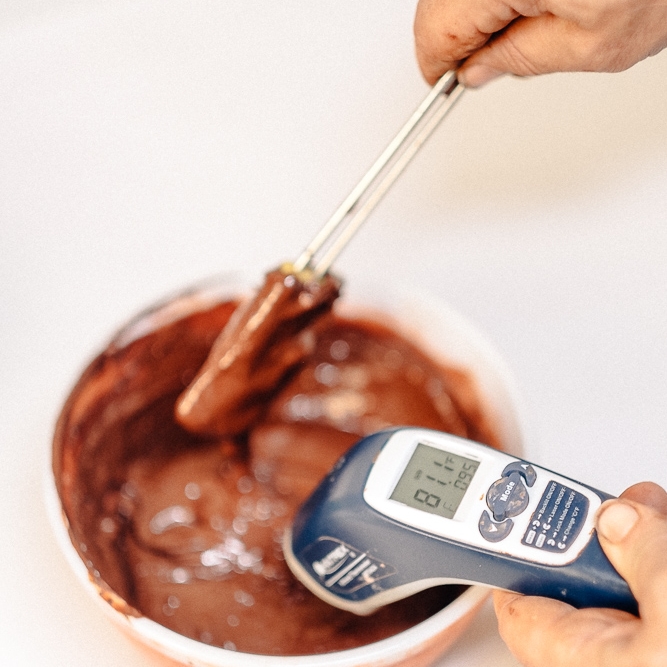
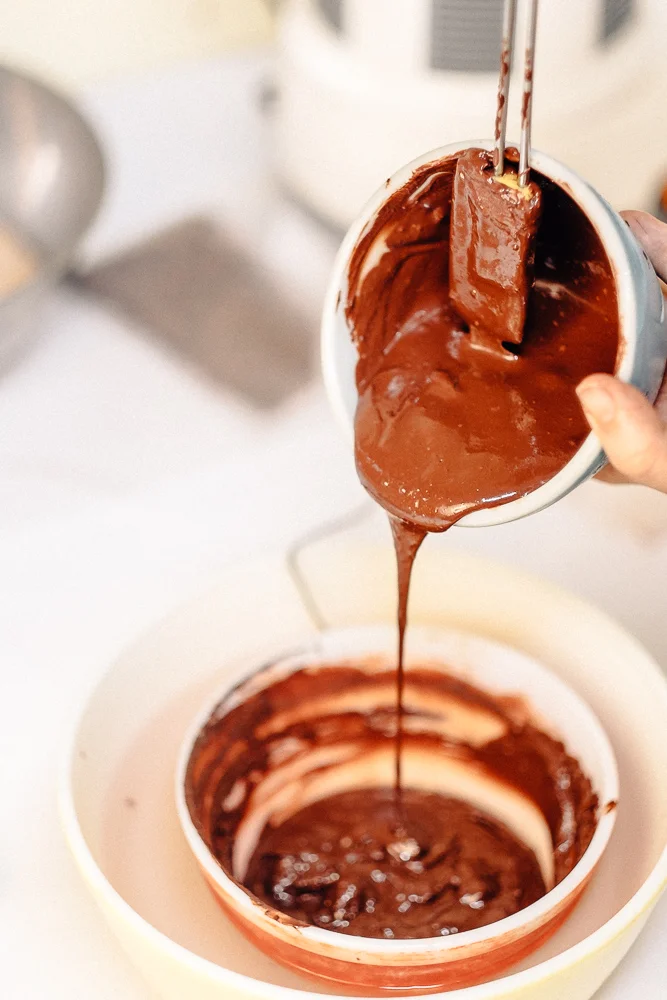

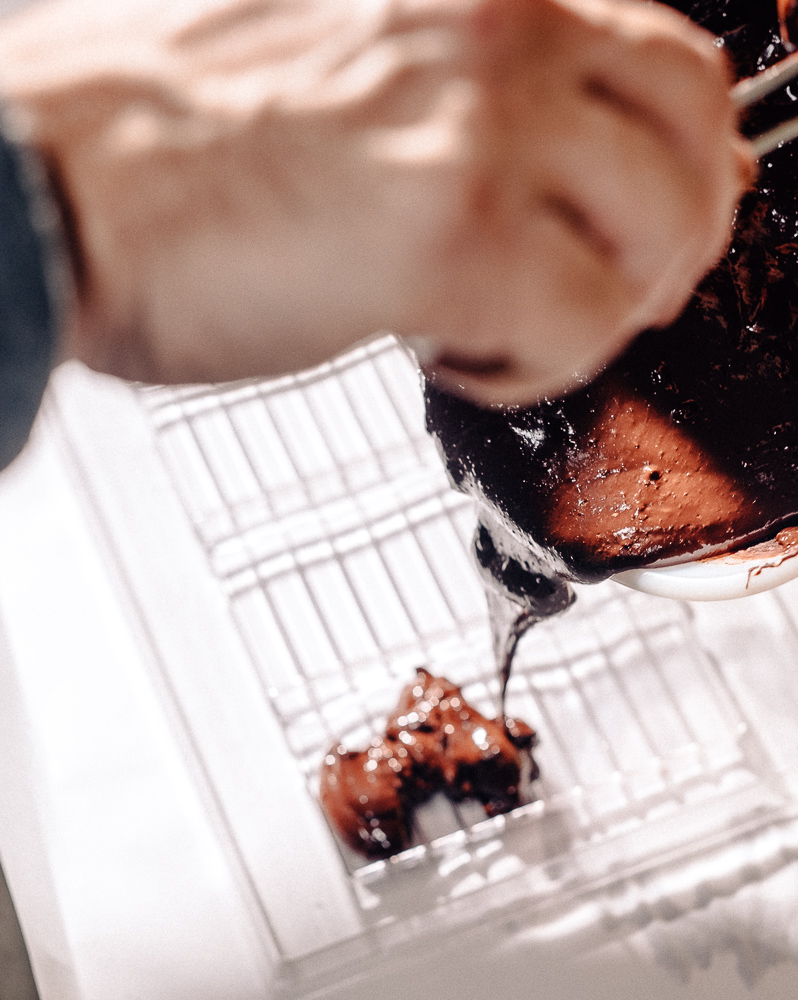



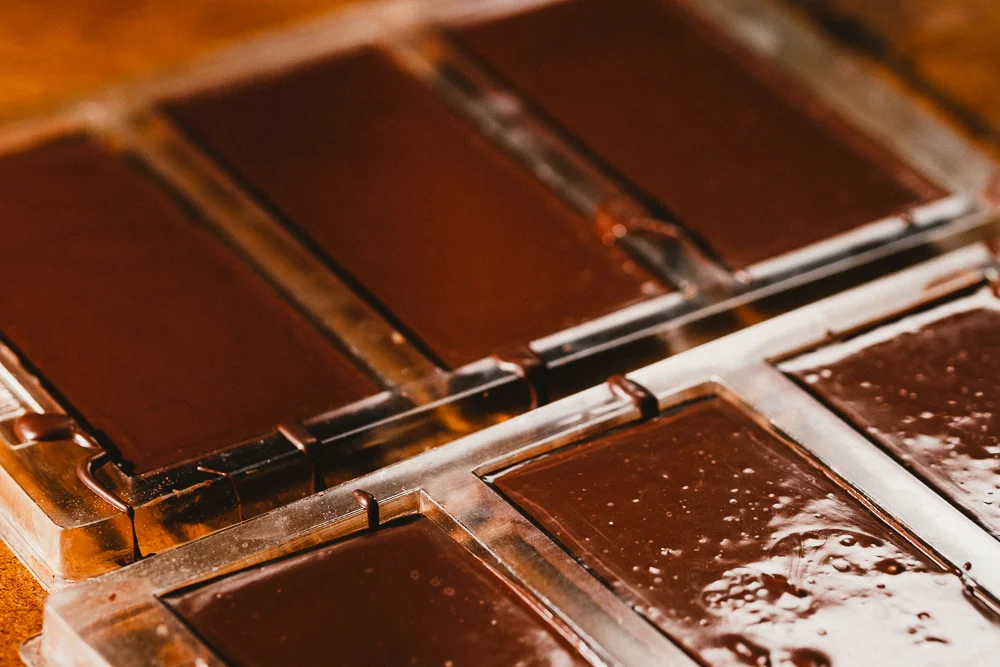












Tempering silk butter is the bomb.